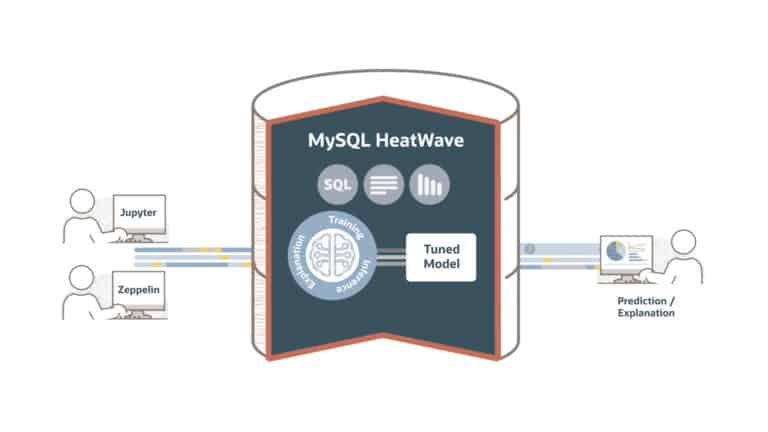Latest extension to MySQL HeatWave to provide high-performance and highly scalable ML capabilities within the MySQL database.
Oracle’s mission is to make the Oracle (Autonomous) Database the only database you need. At least, that’s our interpretation of the company’s news over the past years. Just last month it released the Oracle Database API, which among other things makes it possible to link MongDB JSON databases to its own Autonomous Database. This allows you to work with the JSON database directly from the Oracle environment.
Today’s announcement can basically be placed under the same heading. With the introduction of MySQL HeatWave ML, Oracle is bringing machine learning into the database. This is potentially very interesting, because until now you had to migrate data between databases for this kind of task. In other words, you had to do some degree of ETL. That takes time and resources. HeatWave ML should automate the entire ML lifecycle and also store all the models in the MySQL database. So you no longer have to move them to a specific ML tool or service.
MySQL HeatWave ML benefits from more than 10 years of development
To understand a little better what Oracle has to offer with MySQL HeatWave ML, it is good to take a brief look at MySQL HeatWave itself. After all, that is what this new service is part of. HeatWave is a so-called query accelerator. As that term suggests, the goal of HeatWave is to make MySQL queries run faster. It is also part of the MySQL database, which was originally designed for transactional purposes, not necessarily for the highest performance in terms of the queries themselves. Hence, for things like best performance and scalability, users often use multiple databases side by side. And thus have to migrate a lot of data between databases. If MySQL HeatWave does what it promises, you don’t have to do that anymore.
Adding a query accelerator to a transactional MySQL database may not sound that complicated. However, Oracle has been working on MySQL HeatWave for more than a decade. As such, today’s announcement is quite a big deal.
MySQL HeatWave is massively parallel and massively partitioned. Those are the two prerequisites for providing both excellent performance and scalability. Data is first divided into partitions, which are then processed in parallel. At the end, HeatWave merges the partitions back together. Below you can see how that works schematically.
High performance = high cost?
High performance often has high cost as a downside. Oracle claims this is not the case with MySQL HeatWave. In its own words, this service is optimized for commodity cloud services and the most economical options in terms of compute, storage and network. So it uses object storage instead of more expensive types of storage, and AMD CPUs instead of processors from Intel.
Oracle may have developed MySQL HeatWave for high performance combined with a relatively low price, but for customers it is usually never cost-effective enough. That was also the feedback Oracle received from its customers. They were pleased with the substantial performance improvements over, for example, Snowflake and AWS Redshift, but still didn’t find MySQL particularly cheap. To address this, Oracle has made some further optimizations. Thanks to data compression, it is now possible to process twice as much data as before per node. This should result is considerable savings.
Finally, when it comes to costs, there is another interesting addition to Oracle MySQL HeatWave. As of now, it is also possible to pause HeatWave if you don’t want to use it for a while. If you do want to use the service again after a while, it automatically reloads data and statistics.
Real-time elasticity
One last piece of news on MySQL HeatWave is what Oracle calls real-time elasticity. The feedback from customers was that while it is in itself very nice that HeatWave scales very well, they still had to manually resize their HeatWave cluster. This also means that there is downtime then, and that is never desirable. Real-time elasticity removes this problem. You no longer have to manually optimize the HeatWave cluster after resizing.
Both MySQL HeatWave ML and the other three new features we discussed in this article are available today for all MySQL HeatWave customers in all OCI regions.

